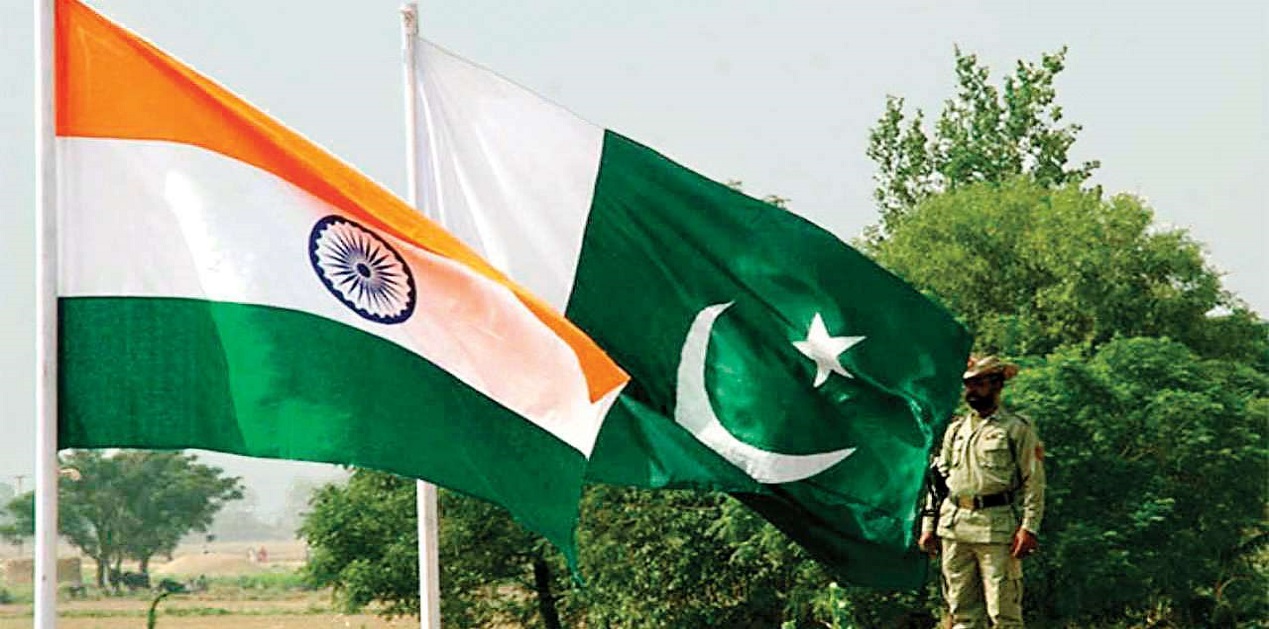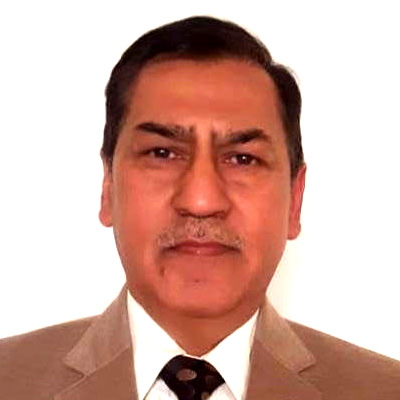The bygone year has been globally geopolitically transformative, with indications of catalysing into a new era. Many of the events are being propelled by the catastrophic pandemic with its birth epicentre at Wuhan, China. The Corona Virus is geopolitical ‘game-changer’, creating a world profoundly different than before. The belligerent, revanchist China has been on a graduated rise to a near-great power status over a period of time. Indeed, China’s ‘rise’ had been in the making, more focussed since 2012, when Xi Jinping became first the Secretary General of the Communist Party, and 2013 also the President of China. China took off on major reforms and initiatives designed to propel China into the future, beginning with the ‘Belt & Road Initiative’ – which was touted as an international infrastructure project, though largely designed to create dependencies in Asia and Africa, a new form of colonisation. The presentation of the Chinese Dream was best evident in 2017, when President Xi unveiled his vision – by 2035 a top innovative nation, and by 2050, a nation with global influence. The United States’ National Security Strategy of 2017 had then called China a ‘revisionist power’!
China has apparently moved away from the established global rules based order– especially those rules not made by it. In containing coronavirus, China has shown positive growth already, and even signed a trade deal with the EU. The annual meetings of the National People’s Congress (NPC) and the Chinese People’s Political Consultative Conference (CPPCC) in March 2021, called two sessions, were defiant of international criticisms of Beijing’s human rights violations in the Xinjiang Uyghur Autonomous Region (XUAR) and the Hong Kong Special Administration Region (HKSAR). The “Decision to Improve the Hong Kong Electoral System” was passed on 11 March, to tackle “existing loopholes and deficiencies” and to prevent “anti-China, destabilizing elements” from becoming part of HKSAR’s power structure. There was a confident projection that Chinese economy will grow to double its 2020 GDP by 2035, following the path of “innovation-driven development so as to speed up the realization of a modern production system,” with major thrust on “high-quality growth” and technological self-sufficiency “during an uncertain international situation.” With its strong control on global value chains, growing innovative economy and expanding military prowess, China remains on international focus.
The transformation in the US policies with the changed Administration is total, though, currently, internal concerns of the ongoing pandemic are of maximum importance. From President Donald Trump’s forceful “America First” and steady distancing from international obligations and multilateral institutions, to President Joe Biden’s serious attempts to rebuild the US country’s reputation abroad, there is near-total change. The US is however, continuing engagement on Afghanistan peace process, with the letter written and proposals made by the US Secretary of State to Afghan President. The US-China Meeting at Alaska was much anticipated globally, except for the undiplomatic diatribe by Mr Yang Jiechi, the Politburo Standing Committee Member and Director of the Central Foreign Affairs Commission of the CCP. In response the US Secretary of State, Antony Blinken, bluntly told Chinese counterparts in this first face-to-face meeting that China was pursuing a “more violent and unstable world” in which “might makes right”, implying China as a danger to global stability.
The US meanwhile alleged that Russia caused the biggest ever cyber-attack on the US government, from March to June 2020, which came to light later in the year, when malicious code was sneaked into updates of software called Orion, made by Solar Winds, which monitors the computer networks of businesses and governments for outages. As an aside, in India too, the major power outages in Mumbai in Oct 2020, and attacks on transmission networks and ports, were ascribed to cyber attacks.
The virtual summit of the Quadrilateral Framework (QUAD), on 12 March 2021 was geopolitical event of immense importance. President Joe Biden of the United States, Japanese Premier Yoshihide Suga, Australian Prime Minister Scott Morrison and Prime Minister Narender Modi, highlighted cooperation to beat the global COVID-19 pandemic, with joint partnership on “equitable” access to vaccines to counter the pandemic”, and emphasised on an “open” and “free” Indo-Pacific region. The visit of United States Secretary of State Antony Blinken and Secretary of Defense Lloyd Austin III to Japan and South Korea as part of “two-plus-two” talks sought to boost regional alliances as a bulwark against China’s expanding might and reaffirm the trans-Pacific partnerships in the face of an increasingly assertive China and hostile North Korea.
Contextually, hence the three-day visit of the US Defense Secretary Lloyd J Austin to India, the first foreign visit since the formation of President Joe Biden's government is most significant. This visit comes at the backdrop of partial disengagement between India and China troops in Eastern Ladakh Line of Actual Control, though the atmosphere of mistrust remains. The situation on India-Pakistan Line of Control has also looked up with the reiteration of ceasefire by the DGMOs in February 2021.
There can be many takeaways from the visit of the US Defense Secretary Lloyd J Austin, in which the partnership was described as a “central pillar” of the American policy for the Indo-Pacific. There was acknowledgement that though foundational agreements, LEMOA, COMCASA and BECA are in place, their full potential for mutual benefit has to be realised. The military-to-military engagement across services, information sharing, cooperation in emerging sectors of defence and mutual logistics support are key areas of progress. There were also discussions on cooperation on non-traditional challenges like oil spills and environment disasters, drug trafficking, Illegal, Unreported, Unregulated (IUU) fishing. There was reiteration of the QUAD coordination to ensure that freedom of navigation in the Indo-Pacific region. There will be enhancement in bilateral and multilateral exercises and cooperation with the US Indo-Pacific Command, Central Command and Africa Command. India exhorted the visiting delegation to take advantage of India’s liberalised foreign direct investment policies in the defence sector.
There are five issues that mandate examination. First, the US biggest challenge is China, while India, with contested borders, too has faced Chinese expansionism and belligerence. Though the US has obvious interests and anxiety in growing influence of China, India should be mindful that territorial issues with China are largely exclusive and bilateral. India should, under the Foundational Agreements with the US, seek militarily beneficial advantages, including dynamic intelligence sharing on Tibet/ Xinjiang.
Secondly, India is currently the second largest arms importing country. The US is exploring newer possibilities for itself in India's defence sector and to reduce Russia's influence. With our strategic relationship with Russia, the larger foreign policy of strategic autonomy, quality and quantity of military equipment of the Russian origin and the dependence on spares over many, many decades ahead, Russia-India relations are on a different compartmentalised plane that cannot be compromised. In this context, the US has expressed resentment over the S-400 Missile System Deal and the threat of Countering America’s Adversaries Through Sanctions Act (CAATSA). The sanctions are purported to be applied against a Nation who knowingly engages in a ‘significant transaction’ with Russia’s defence or intelligence sector. This will bar India from procuring any defence equipment from the US, be it under the Foreign Military Sales (FMS) procedure or under the Strategic Partnership Model. The US President can waive the initial application of the sanctions by writing to the Congressional Committee that the said waiver is in the vital national security interest of the US. Though deliveries of S-400 are unlikely till Oct 2021, the issue hangs as a Damocles sword on the relationship, and needs to be addressed.
Fourthly, is the issue of the US policy on Afghanistan, adherence to the Agreement with Taliban of February 2020, and complete withdrawal of US Troops by 01 May 2021. The US has recently suggested a meeting between the Afghan government representatives and the Taliban in Turkey and also the UN to convene foreign ministers and envoys from Russia, China, Pakistan, Iran, India, and the US to discuss how to promote peace in Afghanistan. With the US Defense Secretary’s consequent visit to Afghanistan, and the separate initiative taken by the Russian government to bring the Afghan Government and Taliban on negotiating table in Moscow, the issue has gathered steam. The involvement of UN could well be to bring about a peace keeping/ enforcing force. India needs careful consideration of the events unfolding in Afghanistan and remains wary of the likelihood of any request of ‘boots on the ground.’
Fifthly, after the India-Pakistan DGMOs talk in February 2021, the US welcomed the strict observance of a ceasefire along the Line of Control, improve communication and reduce tensions and violence. In response to a question on the US role on brokering the Agreement, the US Spokesperson had stated “…that we had called on the parties to reduce tensions along the Line of Control by returning to that 2003 ceasefire agreement.” It is likely that this Ceasefire would have also been discussed during the visit of Gen Lloyd Austin, in the light of Afghanistan Peace Process that mandates Pakistan’s intimate involvement.
And lastly, is the issue that was apparently raised by the Chairman of the Senate Foreign Relations Committee, Senator Robert Menendez, to the US Defence Secretary, stating that “…getting the U.S.-India partnership right is critical to addressing 21st-century challenges, and that includes urging the Indian government to uphold democratic values and human rights.” This issue would have been discussed in some obtuse manner during the visit of the Defense Secretary to New Delhi. Understandably in the burgeoning relations between India and US, based on shared global vision, democratic values and commitments to human rights, there would often be issues that may need to be placed in correct perspective, diplomatically. The abiding relationship that is for mutual benefit and for the Indo-Pacific and South Asian region needs to be nurtured and built upon.
(The paper is the author’s individual scholastic articulation. The author certifies that the article/paper is original in content, unpublished and it has not been submitted for publication/web upload elsewhere, and that the facts and figures quoted are duly referenced, as needed, and are believed to be correct). (The paper does not necessarily represent the organisational stance... More >>
Image Source: https://www.dnaindia.com/world/report-uae-welcomes-india-pakistan-joint-statement-on-ceasefire-observance-2878373











Post new comment